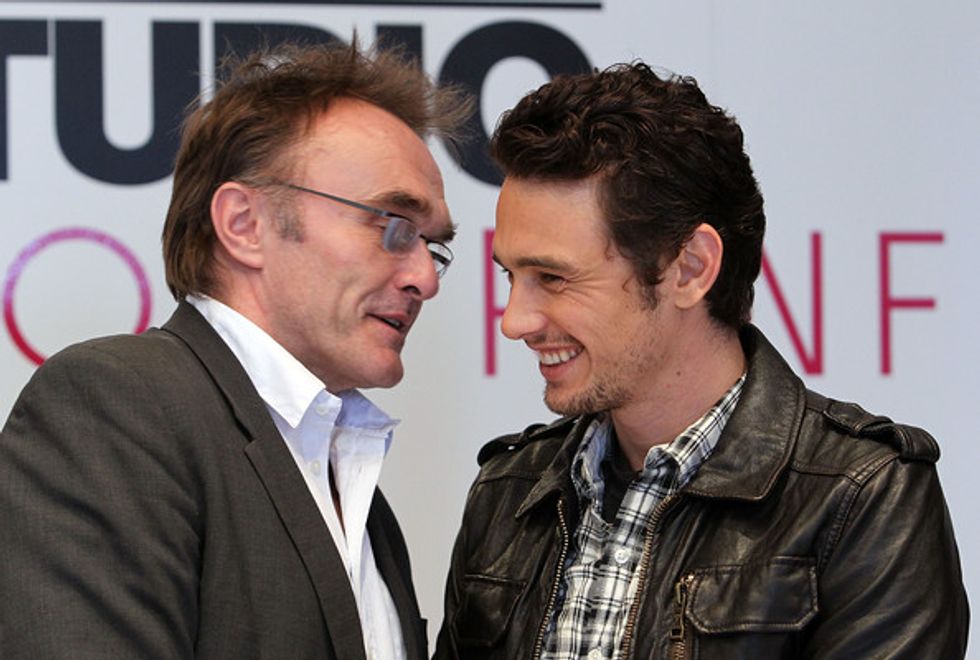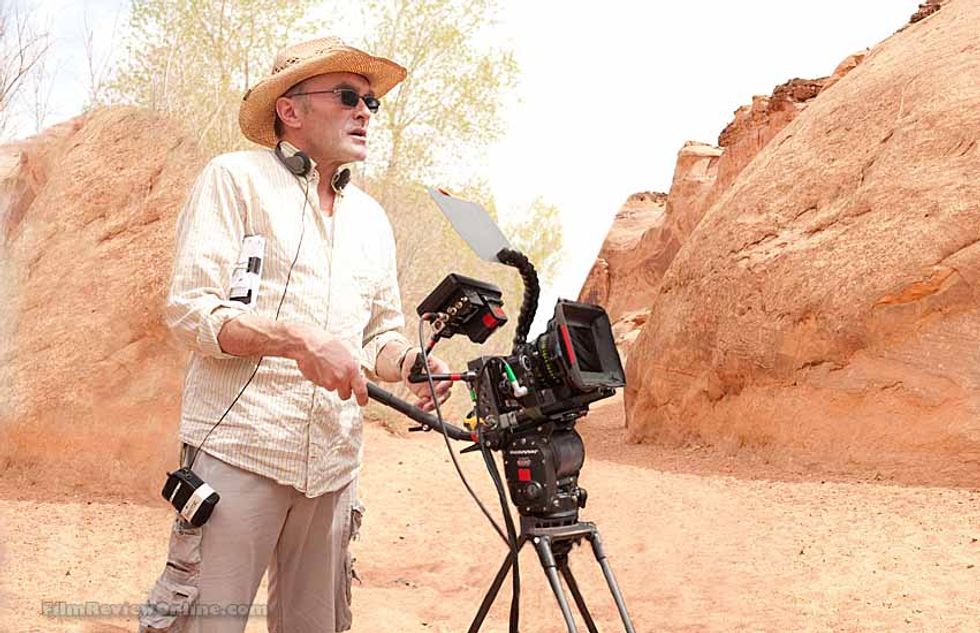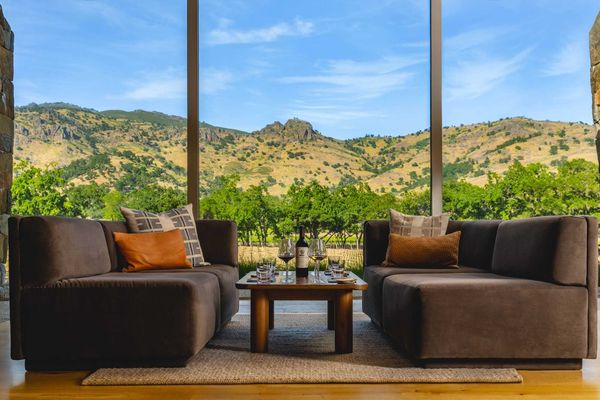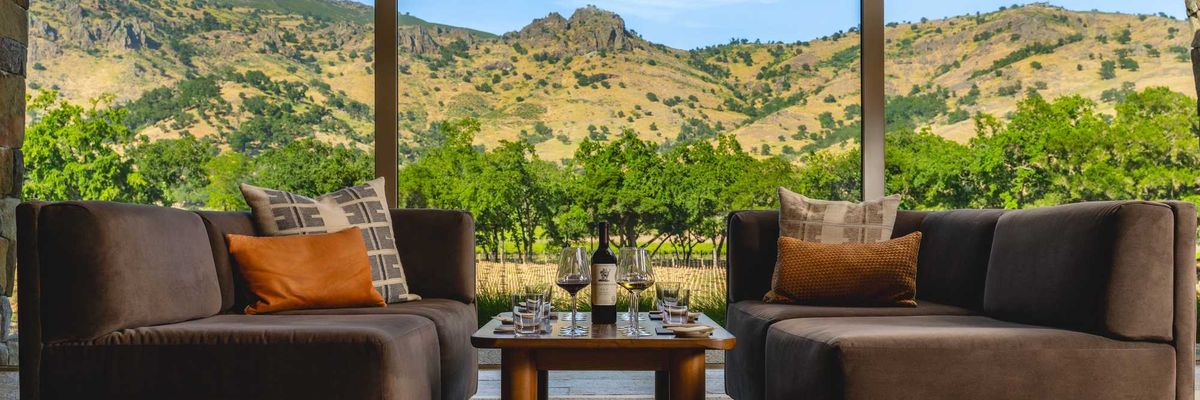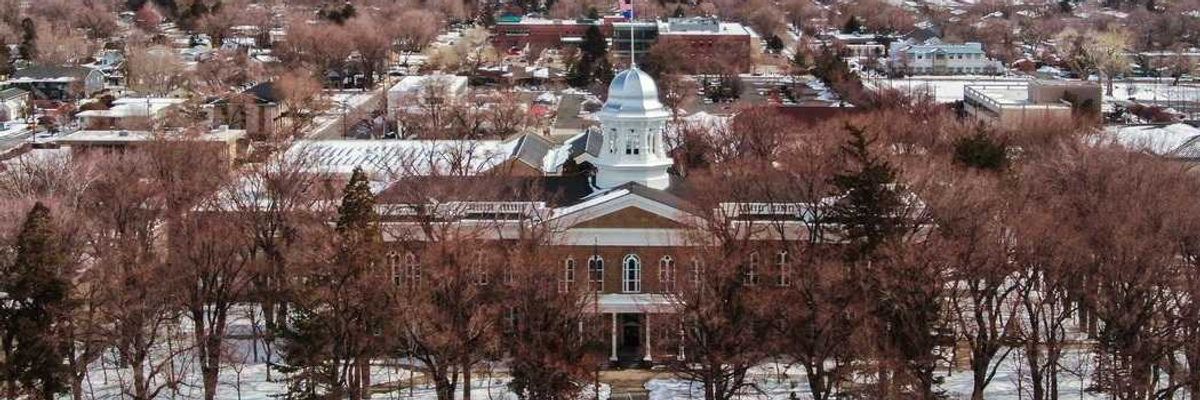Danny Boyle has directed stories about rage-driven zombies, Scottish junkies on the lam, and an unlikely game-show champion educated on the unforgiving streets of Mumbai, but never has he accepted a challenge as daunting as 127 Hours.
Inspired by the real-life ordeal of mountain climber Aron Ralston, pinned to the wall of Utah’s Blue John Canyon for nearly five days by an errant boulder, Hours, which opens Friday, finds the Oscar-winning Slumdog Millionaire director and screenwriter Simon Beaufoy pulling their most ambitious trick to date – translating the agony of a man totally immobilized into riveting, briskly paced drama.
“Simon and I had this idea, which we tried to convey to all the actors, that we’d try to make the film at a tremendous pace,” says Boyle, 54, who admits that Ralston’s story, while inspirational, doesn’t necessarily lend itself to cinematic treatment.
“We believed it would affect the texture of the film. The film is incredibly inert in one sense, and I thought it would be catastrophic if it remained inert and felt that way to the audience. It’s an action movie about a guy who can’t move.”
Hoping to instill in his cast and crew the kind of nervous energy that would invigorate Ralston’s on-screen misadventure, Boyle prodded them to tear through the movie’s nearly three-month shoot. He asked star James Franco, who plays Ralston, to work seven days a week. (They compromised on six.) But if Franco’s richly nuanced performance is any indication, the gambit paid off.
“We’d force everyone to keep working and pushing, pushing, pushing,” Boyle explains. “We wanted to create a feeling of restlessness that would, we hoped, bleed into the film and make it bearable to watch. I felt we could make the film so involving on a visual and emotional level that people would get lost in the story, just as Aron got lost in the canyons.”
To that end, the director complemented his star’s emotional peaks and valleys with cleverly interwoven scenes reflecting the fantasies that played out in Ralston’s mind during his five-day ordeal – memories of girlfriends past, the family he seemed to hold at a distance and simple pleasures like eating and drinking.
Boyle took his cues for these sequences from the hiker’s bestselling 2004 memoir, Between a Rock and a Hard Place, but says he frequently consulted Ralston himself – who still intends to climb Mount Everest – to gain a more intimate understanding of his experience.
“Aron’s story seems so clear in the book, but Simon and I talked to him a lot about stuff that isn’t in the book – how he grew in there as a person,” he says. “If you think about it, he had everything he needed to get out of there. He’s an incredible survivalist, a brilliant athlete, and there must be a reason why nature stops him with a grain of sand and says, ‘Those skills aren’t going to help you here.’
“It’s then that his journey begins, and it’s a painful process – not just the arm-cutting scene – that takes you to a place where you feel very vulnerable. I talked about it with James in terms of childbirth. I’ve got three kids and I’ve been there to witness each of [their births]. It’s an extraordinary thing. Women go through a plateau of pain that’s way beyond anything guys will ever feel, and it’s disturbing but also worth so much more than the suffering that’s involved.”
In the movie, as in life, Ralston must resort to extreme measures – amputating his right arm – to save himself. Yet both Boyle and Beaufoy see Hours less as a chronicle of the excruciating depths to which Ralston was pushed than as a life-affirming account of the emotions that gave his struggle to stay alive added meaning.
“It’s not simply about how Aron survived, incredible as that is,” Boyle says. “There is a life force that Aron tapped into that goes way beyond his courage as an individual. When Aron, who seems all alone, is pulled back to the idea of community, there is something very powerful that happens.
“People say about the story, ‘Oh, I don’t know if I could do that.’ But I think we all would do anything we could for this life that is so beautiful. What I think Aron experienced in that canyon was a sudden realization of the full value of life. One of the ideas of the film is that he was never really alone in the canyon. Physically, he was, but he was surrounded spiritually by everyone he’d ever known or loved or dreamed about. That made the difference.”
127 Hours opens Friday at the Embarcadero Center Cinemas and the Sundance Kabuki Cinemas. For tickets and showtimes, click here.




